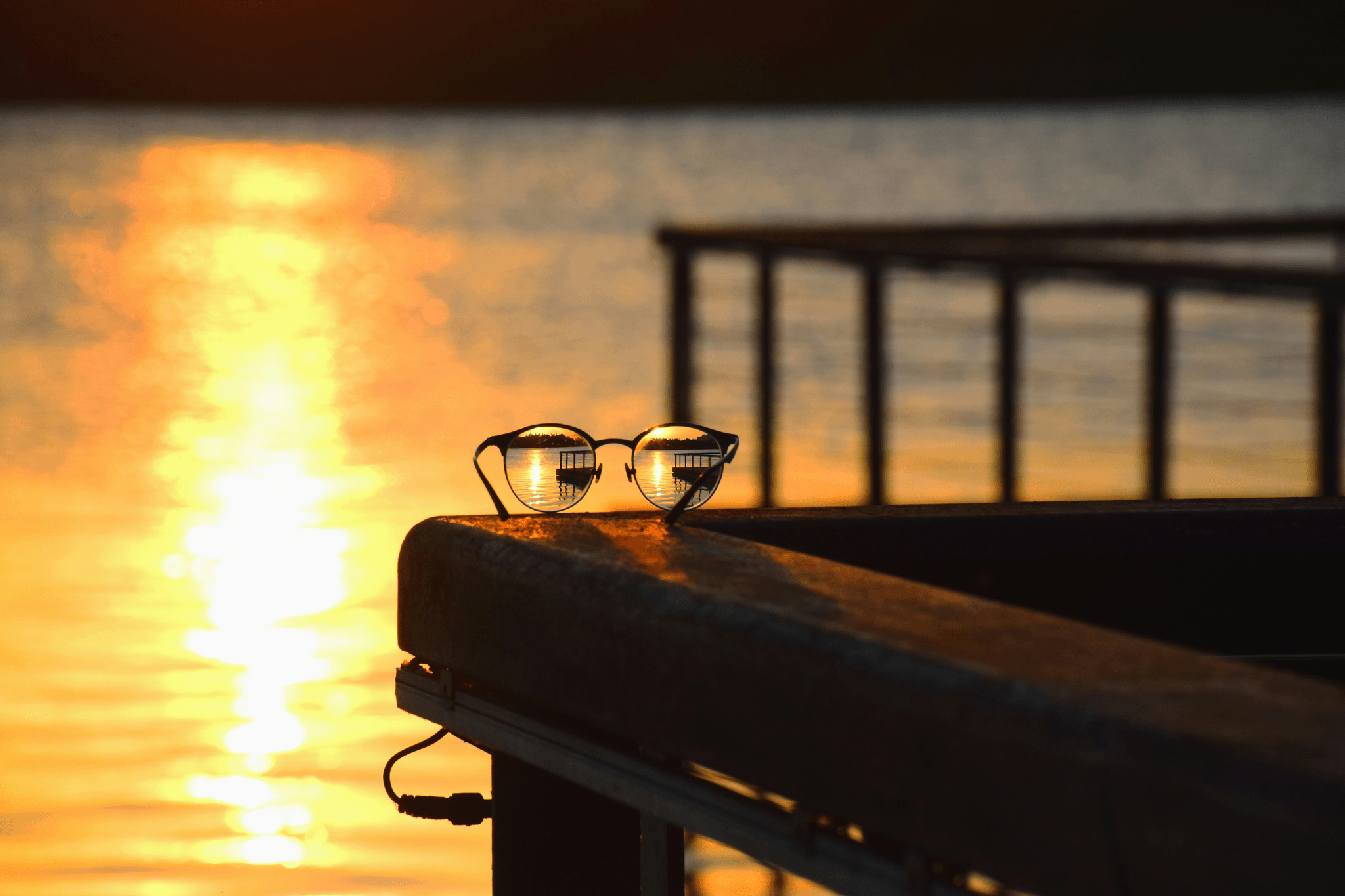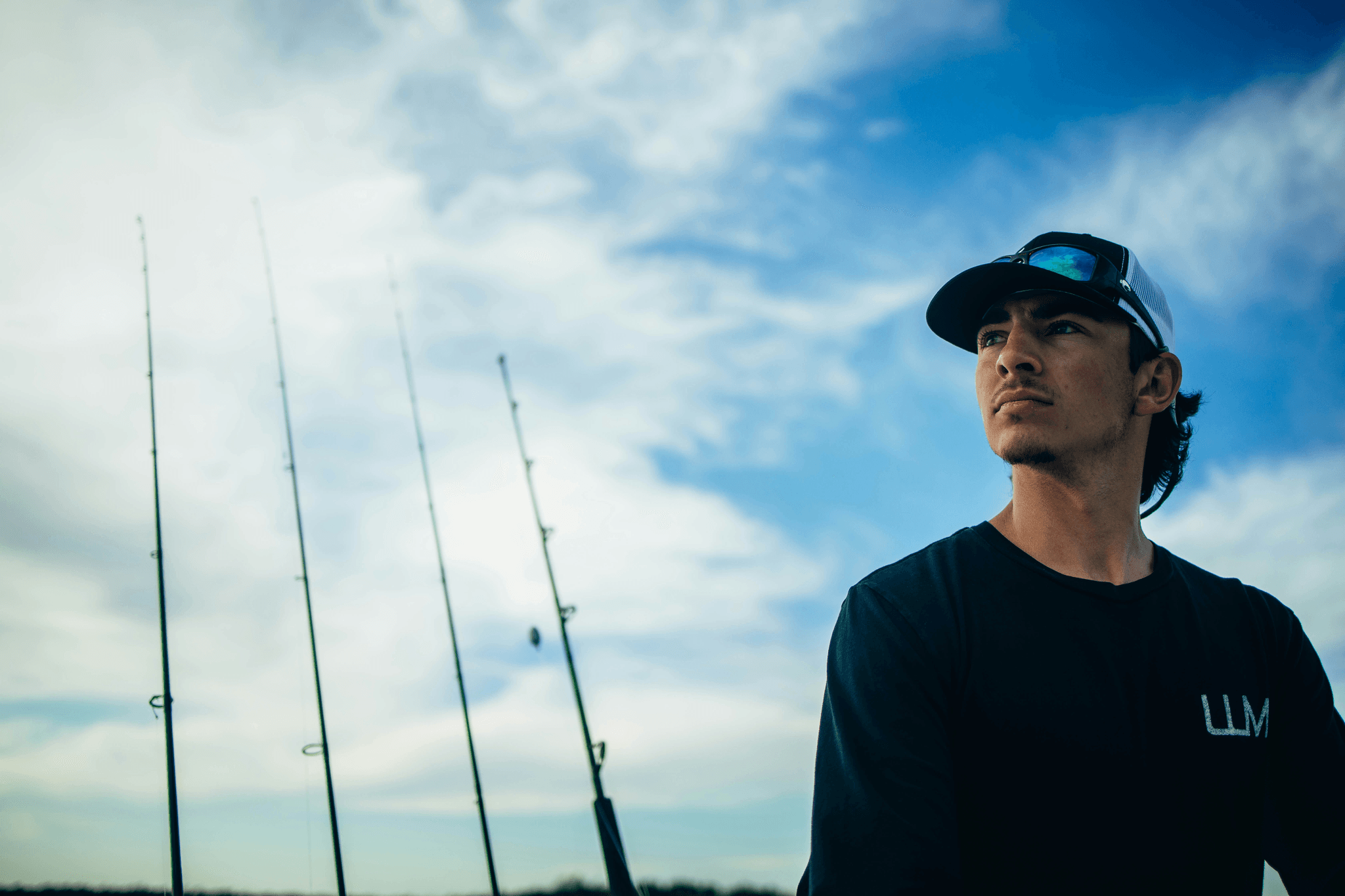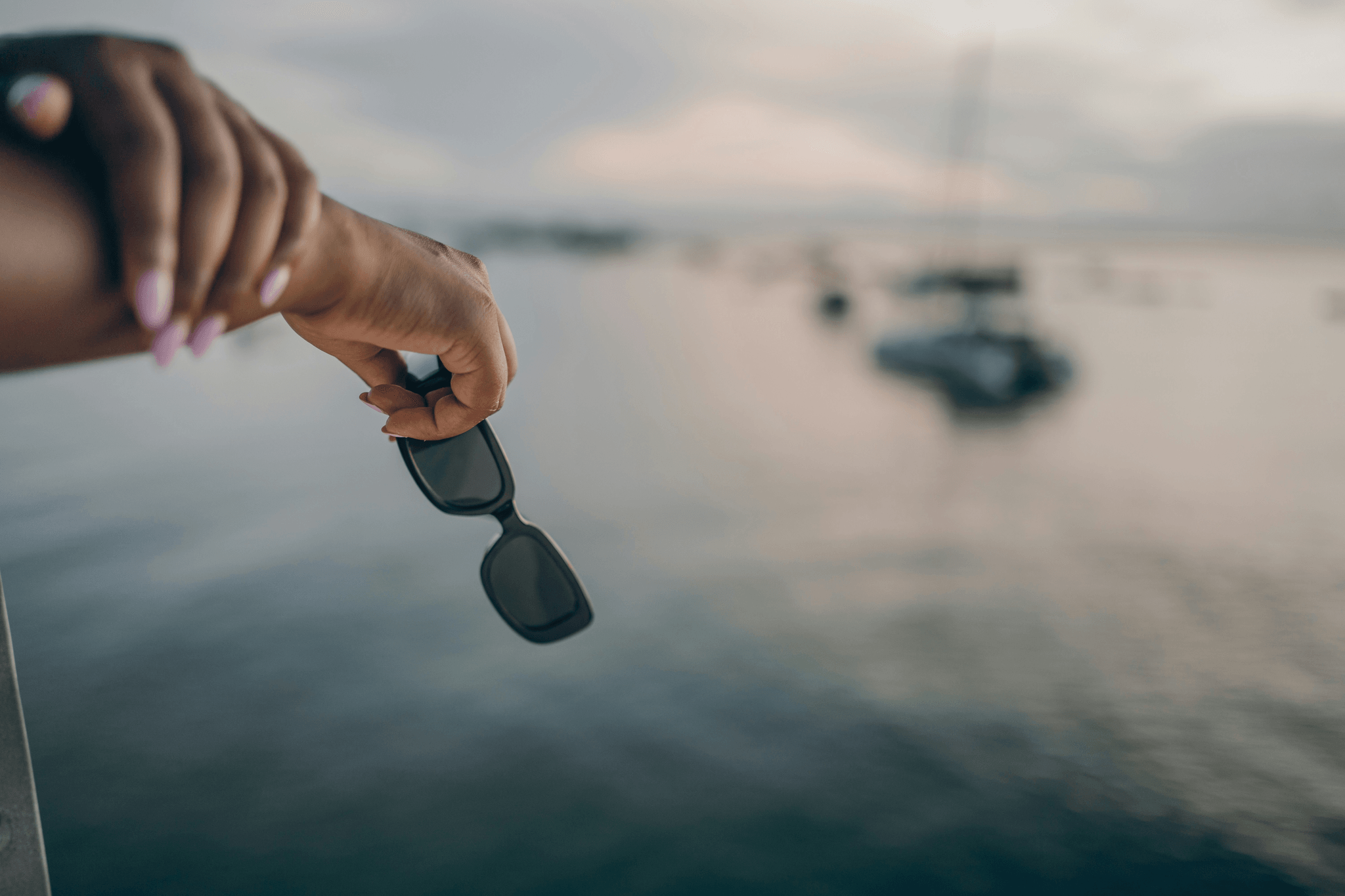Introduction

Fishing is not just about the right rod and bait; it’s also about having the best lens color for fishing. The right lens color can significantly enhance your visibility and experience on the water, making it crucial to understand what color lens is best for fishing. With so many options available, knowing how to choose wisely can be the difference between a successful catch and a day of frustration.
Understanding the Importance of Lens Color
Whether you're wondering what color lenses are best for seeing through water or trying to determine what is the best color to wear when fishing, understanding these nuances is essential. The right lens not only protects your eyes but also enhances contrast and clarity in various environments.
The Science Behind Lens Colors
Different colors of lenses filter light in unique ways, which can affect visibility depending on conditions like time of day and water type. For instance, amber or copper lenses are often recommended for low-light situations, while gray lenses reduce overall brightness without distorting colors—perfect for bright sunny days on the water. By grasping this science behind lens colors, you’ll be better equipped to select which polarized lens color is best for fishing based on your specific needs.
Choosing the Right Lens for Your Environment
The environment plays a pivotal role in determining which lens will serve you best while fishing. Freshwater environments may call for different shades compared to saltwater settings; thus, knowing the best color lens for freshwater fishing versus saltwater fishing can elevate your experience significantly. Additionally, considering factors like weather conditions and water clarity will help you make informed decisions about what color is best for fishing lines as well.
What is the Best Color to Wear When Fishing?

Key Factors to Consider for Lens Color
Choosing the best lens color for fishing involves more than just personal preference; it's about optimizing visibility and reducing glare. Polarized lenses are often recommended because they cut through surface reflections, allowing you to see beneath the water's surface clearly. When considering what color lens is best for fishing, think about your environment: freshwater versus saltwater can significantly influence your choice.
For example, if you're fishing in murky waters, darker lenses like gray or brown may enhance contrast and clarity. Conversely, in clear waters, lighter colors such as yellow or amber can help improve depth perception and highlight underwater structures. Knowing these factors will guide you toward making an informed decision on which polarized lens color is best for fishing.
How Lighting Affects Color Choice
Lighting plays a crucial role in determining what color lenses are best for seeing through water. Bright sunlight can cause harsh glare on water surfaces; thus, darker lenses with polarization are ideal during high-light conditions. However, during overcast days or low-light situations—like dawn or dusk—lighter colored lenses may provide better visibility by enhancing contrast.
It’s also important to consider how different times of day affect light quality and angle when deciding on the best color lens for freshwater fishing versus saltwater environments. For instance, early morning might require a different approach compared to midday bright sun scenarios where glare is at its peak. Adjusting your choice based on lighting conditions ensures that you're always equipped with optimal vision while casting your line.
Comparing Freshwater and Saltwater Needs
Freshwater and saltwater environments present unique challenges that influence what is the best color to wear when fishing. In freshwater lakes and rivers where visibility can vary greatly due to sediment and algae growth, amber or copper lenses tend to excel by enhancing contrast against dark backgrounds. These colors help anglers spot fish hiding among rocks or vegetation more effectively.
On the other hand, saltwater conditions often feature clearer waters but with varying depths that require a different strategy regarding lens selection. Blue or green-tinted lenses are typically favored in these settings as they reduce glare while allowing anglers to see deeper into oceanic waters without losing clarity at greater distances—perfect for spotting fish from afar! Understanding these distinctions will help you choose not only the best color lenses but also ensure that you're prepared no matter where your next adventure takes you.
What Color Lenses Are Best for Seeing Through Water?

Understanding Water Clarity and Depth
Water clarity plays a crucial role in determining what color lens is best for fishing. Clear waters allow more light to penetrate, revealing details beneath the surface, while murky waters can obscure visibility. Understanding how depth affects light absorption is essential; deeper waters may require different lens colors than shallower areas to maintain optimal visibility.
Optimal Lens Colors for Clear Waters
For those seeking the best color lens for freshwater fishing or saltwater adventures, amber and copper lenses are often favored in clear conditions. These colors enhance contrast and improve depth perception, allowing anglers to see submerged objects and fish more clearly. Additionally, gray lenses provide excellent glare reduction without distorting colors—ideal when asking yourself what color lenses are best for seeing through water.
Recommended Brands for Clarity
When selecting eyewear that delivers superior clarity underwater, several brands stand out in the market. Costa Del Mar offers a range of polarized sunglasses with specific lens colors designed for various environments; their blue mirror lenses excel in bright saltwater conditions while copper lenses shine in freshwater settings. Another noteworthy mention is Maui Jim; their high-quality polarized options ensure you have the best lens color for fishing available on the market today.
Best Color Lens for Freshwater Fishing

Top Colors for River and Lake Fishing
For freshwater fishing, the best lens color often depends on the specific conditions of your environment. Amber or brown lenses are widely regarded as the best lens color for fishing in rivers and lakes due to their ability to enhance contrast and depth perception. These colors filter out blue light, making it easier to see fish swimming beneath the surface while also reducing glare from reflective water surfaces.
In clear waters, green lenses are another excellent option as they provide true color perception while enhancing overall clarity. If you're asking yourself, What color lenses are best for seeing through water? consider polarized gray lenses—they minimize glare without distorting colors, making them a solid choice for bright days on lakes or rivers. Ultimately, selecting the right lens will depend on your personal preferences and specific fishing conditions.
How Seasonal Changes Impact Lens Choices
Seasonal changes can greatly impact what is considered the best color lens for freshwater fishing. During spring and summer months when sunlight is more intense, darker tints like gray or smoke may be preferable to cut down on glare while still allowing you to see clearly into the water. Conversely, in overcast or fall conditions where visibility might be lower due to cloud cover or changing foliage colors, lighter tints such as yellow or amber can brighten up your field of view.
Additionally, different seasons can affect fish behavior; during spawning seasons in springtime when fish are closer to shorelines or vegetation areas, using a lens that enhances contrast becomes crucial. Knowing What is the best color to wear when fishing? during these times means adapting your eyewear based on environmental cues—this will maximize both comfort and effectiveness when casting lines into those prime spots.
Expert Insights on Freshwater Fishing
To truly nail down which polarized lens color is best for fishing in freshwater environments requires gathering insights from experienced anglers who have spent countless hours honing their craft. Many experts agree that investing in quality polarized sunglasses with interchangeable lenses offers versatility across various conditions—allowing you to switch based on weather changes throughout your trip. They often recommend starting with a base of amber or brown lenses as they work well across different times of day and varying light levels.
Moreover, understanding how line visibility impacts fish behavior is essential; many anglers find that using specific line colors tailored to their environment can make all the difference—so don't forget about What color is best for fishing lines? Alongside choosing quality eyewear like Daposi sunglasses that enhance visual clarity while you're out there catching dinner!
Which Polarized Lens Color is Best for Fishing?

Benefits of Polarized Lenses
Polarized lenses are essential for any angler looking to improve their game. They work by filtering out horizontal light waves, which means less glare bouncing off the water's surface—perfect for spotting fish below. Not only do they enhance clarity and contrast, but they also reduce eye strain during long hours under the sun, making them an indispensable part of your fishing gear.
Best Polarized Colors for Various Conditions
Choosing the best lens color for fishing depends largely on your environment and lighting conditions. For bright, sunny days on open waters, gray or green lenses are often recommended as they provide true color perception while reducing brightness. On cloudy days or in low-light conditions, amber or yellow lenses can brighten your view and enhance contrast—ideal for those who want to know what color lenses are best for seeing through water.
Real-World Fishing Scenarios and Color Options
Imagine you're out on a lake at dawn; using amber polarized lenses will help you spot fish as they stir beneath the surface with enhanced detail. Conversely, if you’re saltwater fishing under bright midday sun, gray polarized lenses will protect your eyes while allowing you to see deeper into the water—making them among the best color lenses for saltwater fishing. Remember that different environments call for different approaches; understanding these nuances helps answer questions like What is the best color to wear when fishing?
What Color is Best for Fishing Lines?

Matching Line Colors to Environment
The first step in determining what color line is best for fishing is understanding your environment. In clear waters, lighter colors such as clear or blue lines tend to work well because they are less visible to fish. However, in murky or stained waters, a darker line like green or brown can be more effective since these colors blend seamlessly with the surrounding water and vegetation—making them less likely to spook wary fish.
Additionally, when considering freshwater versus saltwater conditions, you may want to adjust your choices accordingly. For instance, the best color lens for freshwater fishing often aligns with using green or brown lines due to their natural appearance in lakes and rivers. Conversely, saltwater anglers might prefer brighter colors like yellow or pink that stand out against sandy bottoms and help maintain visibility.
How Visibility Affects Fish Behavior
Visibility plays a crucial role in how fish react to different colored lines. Fish are naturally curious creatures but also very cautious; they tend to shy away from anything that seems out of place in their habitat. If your line stands out too much against its background—especially during bright sunny days—it could lead potential catches to avoid your bait altogether.
Tips from Anglers on Line Color Choices
Experienced anglers often share valuable insights on choosing line colors based on personal experiences and local conditions. One common tip is always carrying multiple spools of different colored lines so that you can adapt quickly if conditions change throughout the day; this flexibility could mean the difference between a successful trip and going home empty-handed!
Another helpful hint involves testing out various shades during different times of day; sometimes early morning light requires one approach while afternoon sun demands another entirely! And don’t forget about seasonal changes—the best color lenses for saltwater fishing might differ from those used during cooler months due simply because aquatic life behaves differently throughout each season.
In conclusion, understanding what color is best for fishing lines requires careful consideration of your specific environment and conditions at play while you're out on the water. By matching line colors effectively with surroundings and being mindful of visibility's impact on fish behavior—as well as gathering tips from seasoned anglers—you'll increase your chances of landing that prized catch!
Conclusion

Crafting Your Perfect Fishing Kit
Your fishing kit should be a harmonious blend of tools tailored to your environment and style. Start by considering essential items like rods, reels, and tackle, but don’t overlook the importance of choosing the best color lens for freshwater fishing or saltwater conditions. A thoughtful approach will ensure that every component—from bait to eyewear—works together seamlessly to increase your chances of landing that big catch.
The Role of Quality Eyewear
Quality eyewear plays an indispensable role in any angler's toolkit; after all, what good is a great rod if you can't see where you're casting? The right lenses not only protect your eyes from harmful UV rays but also enhance contrast and clarity on the water's surface. So when you're asking yourself what is the best color to wear when fishing?, remember that investing in high-quality polarized sunglasses can drastically improve your ability to spot fish beneath the waves.
Why Daposi Sunglasses Enhance Your Experience
When it comes to enhancing your fishing experience, Daposi sunglasses stand out as a top choice among anglers. Their advanced polarized lenses are designed specifically with fishermen in mind—offering optimal clarity while filtering out glare from both freshwater and saltwater environments. If you want to know which polarized lens color is best for fishing, look no further than Daposi; their products excel at helping you see through water while ensuring comfort during long hours spent under the sun.
